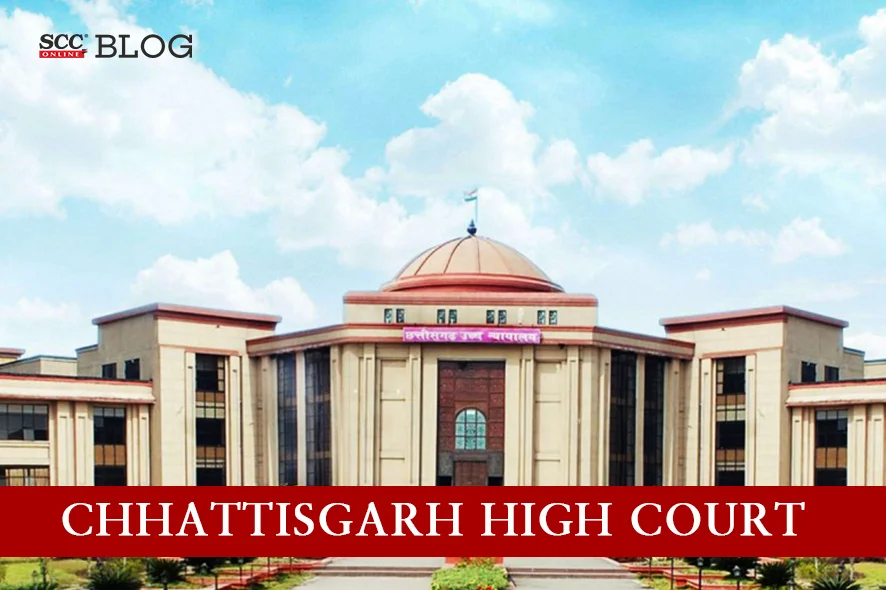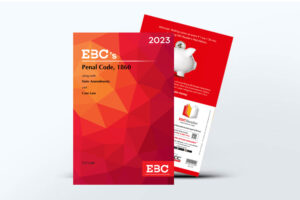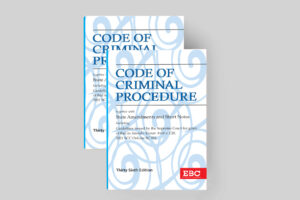Chhattisgarh High Court: In a case wherein, the Trial Court after passing the death sentence to the respondent-accused, submitted the proceedings to the present Court for confirmation of the death sentence as per Section 366(1) of the Criminal Procedure Code, 1973 (‘CrPC’), the Division Bench of Ramesh Sinha, CJ., and Naresh Kumar Chandravanshi, J.*, opined that in the instant case, the respondent had caused brutal murder of his father and mother and hence his act shocked the conscience of the Court and society at large, but motive of the crime was not found so grievous in nature. Thus, due to such trivial issues, instant crime of double murder was committed and extreme sentence of capital punishment was not warranted and the present case did not fell within the category of ‘rarest of rare cases’. Thus, the Court opined that imprisonment for life to the extent of remainder of natural life of the respondent would be complete and adequate to meet the ends of justice and directed the commutation of death sentence to imprisonment of life to the extent for remainder of natural life of the respondent. Further, the Court affirmed the respondent’s conviction under Section 25(1B)(a) and Section 27(2) of the Arms Act, 1959 (‘the Act’) and reduced the sentence from five years to three years for the offence under 25(1B)(a) of the Act.
Background
In the instant case, the deceased were the parents of the respondent. On 01-01-2018, at around 06:25 am, the complainant informed the Police Station that he received a call from his maternal grandmother that something had happened to his maternal grandfather and she called him quickly to the house. The respondent reached there and saw that the outside and inside doors were open and when the complainant went inside the house, he saw that his maternal grandfather and grandmother were shot dead.
Thereafter, when the investigation was completed, the charge-sheet was filed and the charges were framed against the respondent under Section 302 of the Penal Code, 1860 (‘IPC’) and Sections 25(1B)(a) and 27(2) of the Act and a charge under Section 25(1B) of the Act was framed against the two associates of the respondent. Subsequently, the statements of the accused persons were recorded under Section 313 of the CrPC in which they claimed to be innocent and falsely implicated.
The Trial Court convicted and sentenced the respondent to the death for the offence under Section 302 of the IPC and five and ten years for the offences under Section 25(1B)(a) and 27(2) of the Act respectively and also, sentenced the two accused to five years for an offence under Section 25(1B)(a) of the Act.
Thus, the Trial Court after passing the death sentence to the respondent submitted the proceedings to the present Court for confirmation of the death sentence as per Section 366(1) of the CrPC.
Analysis, Law, and Decision
The Court upon perusal of the evidence, opined that it was proved that on the date of the incident, when both the deceased and the respondent were present in the house, both the deceased were shot dead by three bullet injuries. Further, on being called by one of the deceased, the complainant reached the house within eight-nine minutes and found that both the deceased were shot dead.
The Court opined that the respondent and his wife had tried to demonstrate that there were other ways to enter in the house, but their deposition did not inspire the Court’s confidence as Investigating Officer had clearly stated that no evidence was found on inspection to demonstrate that any outside person had entered into the house.
The Court referred to Section 106 of the Evidence Act, 1872 (‘IEA’) and opined that Section 106 of the IEA was an exception to Section 101 of the IEA and when any fact was especially within the knowledge of any person, the burden of proving that fact was upon him. The Court relied on Shambhu Nath Mehra v. State of Ajmer, 1956 SCC OnLine SC 27; Nagendra Sah v. State of Bihar, (2021) 10 SCC 725; Gurcharan Singh v. State of Punjab, AIR 1956 SC 460; Sawal Das v. State of Bihar, (1974) 4 SCC 193; Trimukh Maroti Kirkan v. State of Maharashtra, (2006) 10 SCC 681 and Tulshiram Sahadu Suryawanshi v. State of Maharashtra, (2012) 10 SCC 373 and opined that in the present case, liability was upon the respondent that when he along with his father, mother were present in the house, then how did homicidal death of his mother and father were caused by three gunshot injuries.
Further, with regard to the respondents contention that no motive was proved on the part of the respondent, the Court relied on State of Gujarat v. Anirudhsing, (1997) 6 SCC 514; Suresh Chandra Bahri v. State of Bihar, (1995) Supp (1) SCC 80 and opined that it was well-settled and trite law that absence of motive could be missing link of incriminating circumstances, but once the other incriminating circumstances were established to its entirety, absence of motive would not give any benefit to the accused.
However, in the present case it was alleged that due to lack of ideological harmony between father and son, the deceased father scolded the respondent and criticized various activities and also, threatened the respondent to deprive him from his property. Due to this, the respondent was fed up from his father. Thus, motive was also proved in the present case and accordingly, the Court confirmed the conviction of the respondent recorded under Section 302 of IPC and Section 25(1B)(a) and Section 27(2) of the Act.
Further, with regard to the death sentence awarded to the respondent, the Court relied on Sushil Murmu v. State of Jharkhand, (2004) 2 SCC 338; Bachan Singh v. State of Punjab, (1980) 2 SCC 684; Machhi Singh v. State of Punjab, (1983) 3 SCC 470; Panchhi v. State of U.P., (1998) 7 SCC 177; Ramnaresh v. State of Chhattisgarh, (2012) 4 SCC 257 and on perusal of the impugned judgment, opined that the respondent was convicted and on the same day, the death penalty was imposed upon him. Considering that it had been committed in a very cruel and inhuman manner which was an extremely brutal, grotesque, diabolical, revolting or dastardly manner, of his own father and mother and therefore, such offence of respondent affected the entire moral fibre of the society, hence the instant case fell under rarest of rare cases category.
However, the Court opined that in the instant case, the respondent had committed murder of his father and mother with three gunshot injuries to each of them mainly because there was a lack of ideological harmony between them. However, the Trial Court had not taken into consideration the probability of the respondent being reformed and rehabilitated, and the respondent had also not been given effective opportunity of hearing on question of sentence.
The Court opined that in the instant case, the respondent had caused brutal murder of his father and mother and hence his act shocked the conscience of the Court and society at large, but motive of the crime was not found so grievous in nature. Thus, due to such trivial issues, instant crime of double murder was committed and extreme sentence of capital punishment was not warranted in the instant case and the present case did not fell within the category of ‘rarest of rare cases’.
Thus, the Court opined that imprisonment for life to the extent of remainder of natural life of the respondent would be complete and adequate to meet the ends of justice and directed the commutation of death sentence of the respondent into imprisonment of life to the extent for remainder of natural life of the respondent. urther, the Court affirmed the respondent’s conviction under Section 25(1B)(a) and Section 27(2) of the Act and reduced the sentence from five years to three years for the offence under 25(1B)(a) of the Act.
Further, the Court set aside and quashed the conviction and sentence imposed by the impugned judgment on the two associate of the accused and acquitted them of the charges levelled against them. The Court directed the two associates of the respondent to file personal bond and two sureties in the like amount to the satisfaction of the Court in compliance with Section 437-A of the CrPC.
[State of Chhattisgarh v. Sandeep Jain, 2023 SCC OnLine Chh 5307, decided on 01-12-2023]
*Judgment authored by- Justice Naresh Kumar Chandravanshi
Advocates who appeared in this case :
For the Appellant: Chandresh Shrivastava, Advocates;
For the Respondent: N.K. Shukla, Senior Advocate with Sumit Singh, Advocate
For the Appellant in CRA No. 272 of 2023: M.P.S. Bhatia and Amiyakant Tiwari, Advocates









